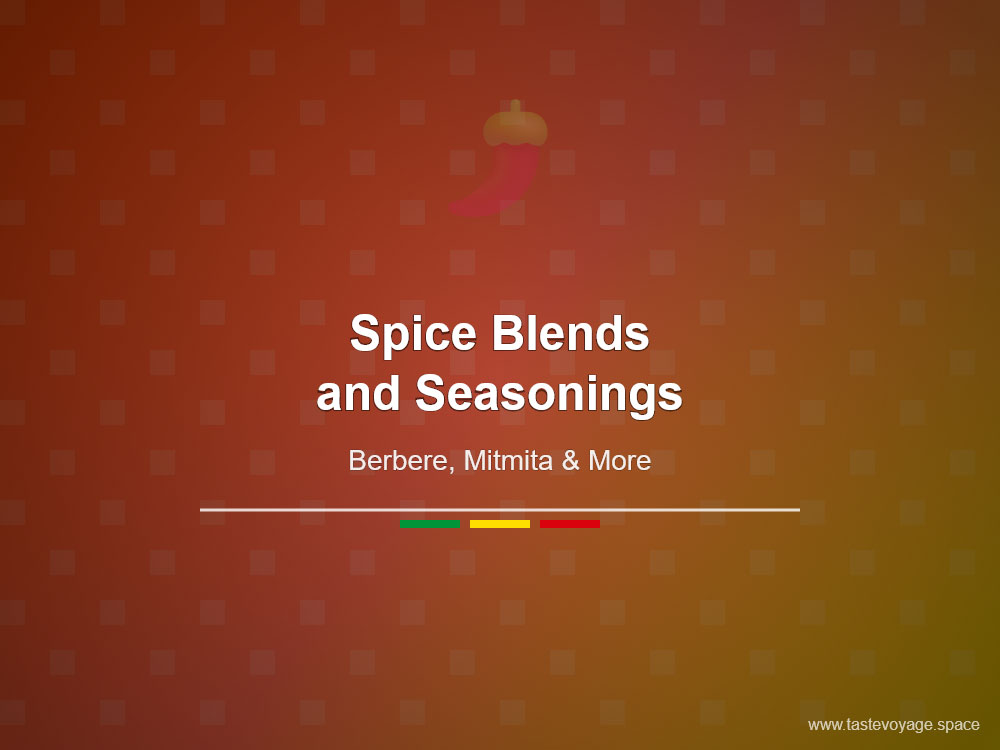Ethiopian Cardamom: Flavor Profile & Usage Guide
Travel the World Through Food >> Ethiopian Cuisine>>Spice Blends and Seasonings>> Ethiopian Cardamom: Flavor Profile & Usage Guide
Ethiopian Cardamom: Flavor Profile & Usage Guide
Ethiopian Cardamom Flavor Profile Guide
Ethiopian cuisine is renowned for its rich flavors, vibrant aromas, and deep cultural roots. Among its many distinctive ingredients, cardamom stands out as a key spice that elevates numerous traditional dishes. This guide explores the cultural significance and culinary beauty of cardamom in Ethiopian cooking, offering a comprehensive understanding of its unique flavor profile.
The Cultural Significance of Cardamom in Ethiopia
Cardamom holds a esteemed place in Ethiopian culinary traditions. It is more than just a spice; it is a symbol of the country’s rich agricultural heritage and centuries-old spice trade. Historically, Ethiopia’s favorable climate and fertile soils have made it an ideal region for cultivating high-quality cardamom, which has been cherished for generations.
In Ethiopian culture, cardamom is often used in both everyday meals and special ceremonial dishes. Its warm, aromatic presence is believed to bring good fortune and positive energy. Often, it is included in traditional coffee ceremonies, which are central to Ethiopian social life, highlighting its role in fostering community bonds and hospitality.
Culinary Significance of Cardamom in Ethiopian Dishes
In Ethiopian cuisine, cardamom provides a distinctive aromatic note that complements the bold flavors of other ingredients. It is frequently used in Spice Blends and seasoning mixes to add depth and complexity to stews, lentil dishes, and vegetable preparations. The spice’s complex aroma and flavor profile help balance the richness of Meat Dishes, making each bite more harmonious.
One of the most iconic uses of cardamom in Ethiopia is within the famous Berbere spice blend, where it contributes a sweet yet spicy undertone. It also plays a crucial role in doro wat, Ethiopia’s beloved chicken stew, imparting a warm and fragrant aroma that elevates the dish’s savory profile. Beyond stews and meats, cardamom is sometimes infused into beverages like traditional spiced tea, further showcasing its versatility.
The Flavor Profile of Ethiopian Cardamom
Ethiopian cardamom has a unique flavor profile that sets it apart from other varieties around the world. It boasts a complex aroma characterized by a combination of sweet, citrusy, and minty notes. Its taste is warm and mildly spicy, with hints of eucalyptus and a subtle sweetness that adds layers of flavor to dishes.
This spice’s aromatic profile enhances the sensory experience of Ethiopian cuisine, creating an inviting and comforting atmosphere at the dining table. Its vibrant scent and flavor are integral to the overall culinary experience, making calls for a deeper appreciation of Ethiopian food traditions.
Appreciating the Art of Ethiopian Spice Blends
Ethiopian cooks have mastered the art of blending spices, and cardamom is a vital component in many of these culinary masterpieces. The careful balance of cardamom with other spices like cloves, cinnamon, and fenugreek showcases the complexity and harmony that characterize Ethiopian spice preparation.
Understanding the flavor profile of Ethiopian cardamom enriches the appreciation of these traditional blends. It highlights how each ingredient contributes to the overall sensory and cultural richness of Ethiopian cuisine.
Final Thoughts
Ethiopian cardamom is much more than a spice; it is an emblem of the country’s culinary heritage and cultural identity. Its unique flavor and aromatic qualities have made it an essential ingredient in traditional dishes and ceremonial practices. Exploring its profile offers a window into Ethiopia’s rich food culture, inviting us to appreciate the depth, history, and artistry embedded in every bite.
Whether you’re a seasoned chef or an enthusiastic food lover, embracing the flavors of Ethiopian cardamom offers A Delicious journey into a world of captivating aromas and timeless traditions.
